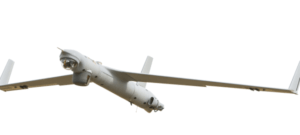 Insitu, a manufacturer of UAS for civil and umanned use, has developed a new technology for providing greater maritime search capability for their ScanEagle product. The technology dubbed ViDAR (Video Detection and Ranging) was engineered in collaboration with Hood Technology and Sentient Vision Systems.
Insitu, a manufacturer of UAS for civil and umanned use, has developed a new technology for providing greater maritime search capability for their ScanEagle product. The technology dubbed ViDAR (Video Detection and Ranging) was engineered in collaboration with Hood Technology and Sentient Vision Systems.
ViDAR enables wide-area open-ocean searches that have historically required the use of large manned aircraft or ships equipped with radar to detect objects at sea. ViDAR allows UAS to now “carry the load” and free up resources to be applied on other critical assignments.
ViDAR works by autonomously sweeping the ocean’s surface in realtime and in large swaths much like a radar. It identifies distinct shapes and sends location coordinates and snapshots back to the ground control station in real time. The technology calls attention to inconsistencies in the water’s surface, such as a ship, a whale or an oil slick. Once spotted, an operator can zoom in on a location.
Last fall, Insitu we flew ViDAR over the South Pacific and saw results impossible to achieve with the “look around with your camera” approach. Small boats showed up at medium distance and large boats were identified from even further away. At one point, they cued to a snapshot and were rewarded with images of a spouting whale over a mile away from ScanEagle. In a blog post they write, “ScanEagle equipped with ViDAR is proof of the innovative spirit that continues to drive superior information delivery and better decision making around the world.”
ViDAR is in the final stages of development.
Frank Schroth is editor in chief of DroneLife, the authoritative source for news and analysis on the drone industry: it’s people, products, trends, and events.
Email Frank
TWITTER:@fschroth







Leave a Reply